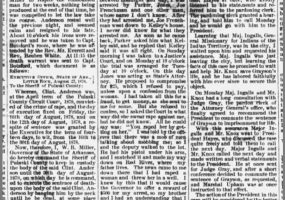calsfoundation@cals.org
Events





















aka: James X. Caruthers and Bubbles Clayton (Trial and Execution of)









aka: Battle of Post of Arkansas





